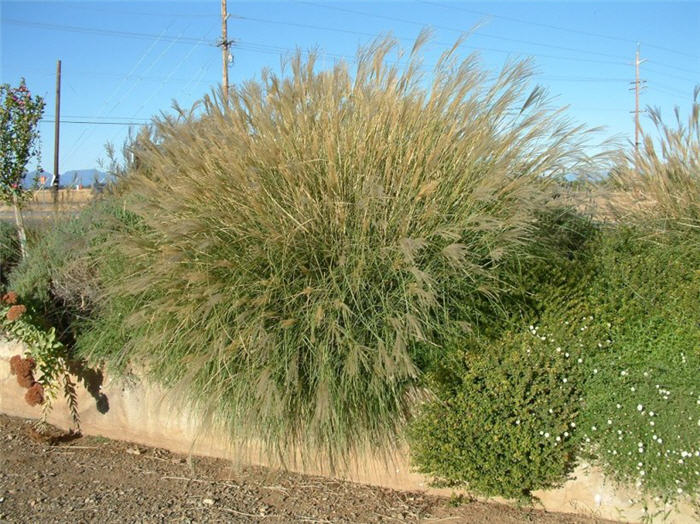| Botanical Name: Miscanthus sinensis 'Gracillimus' | |
| Common Name: Gracillimus Maiden Grass |

-
Anatomy
-
Culture
-
Design
Plant Type
Perennial, Grass
Height Range
6-12'
Flower Color
Gold
Flower Season
Summer, Fall
Leaf Color
Green, Silver
Bark Color
n/a
Fruit Color
n/a
Fruit Season
n/a
Sun
Full, Half
Water
Medium
Growth Rate
Fast
Soil Type
Sandy, Clay, Loam, Rocky, Unparticular
Soil Condition
Average, Rich, Well-drained, Moist
Soil pH
Neutral
Adverse Factors
n/a
Design Styles
English Cottage, Formal, Japanese, Mediterranean, Ranch, Spanish, Native Garden, Woodland
Accenting Features
Specimen, Unusual Foliage
Seasonal Interest
Winter, Spring, Summer, Fall
Location Uses
Background, Perennial Border, Shrub Border, Foundation, Patio, Park, Raised Planter, Walls / Fences, With Rocks
Special Uses
Cut Flowers, Hedge, Screen, Mass Planting, Naturalizing
Attracts Wildlife
n/a
Information by: Stephanie Duer
Photographer: JJ Neilson Arboretum
Photographer: JJ Neilson Arboretum
-
Description
-
Notes
This Miscanthus is one of the oldest in the nursery trade. It has a fine texture and showy flowers. The blades have narrow, silver mid-ribs and form stiffly erect clumps from 6 to 8 feet tall. Flowers have a nice separation from the grass, rising 1 to 1-1/2 feet above the clump; emerging copper-colored in late September and maturing to a silvery white. Grows best in full sun but will tolerate morning shade. Clump turns orange to almond colored in the fall.
Miscanthus grow in full sun to bright shade, though white variegated forms appreciate a little mid-day shade. Provide well drained soils; sandy-loam to clay-loam will do just fine. All Miscanthus should be cut back in late winter to early spring, about the time that spring bulbs are emerging. Cut back to within inches of the ground. Like other ornamental grasses, Miscanthus pairs well with spring flowering bulbs. See Guides for details.